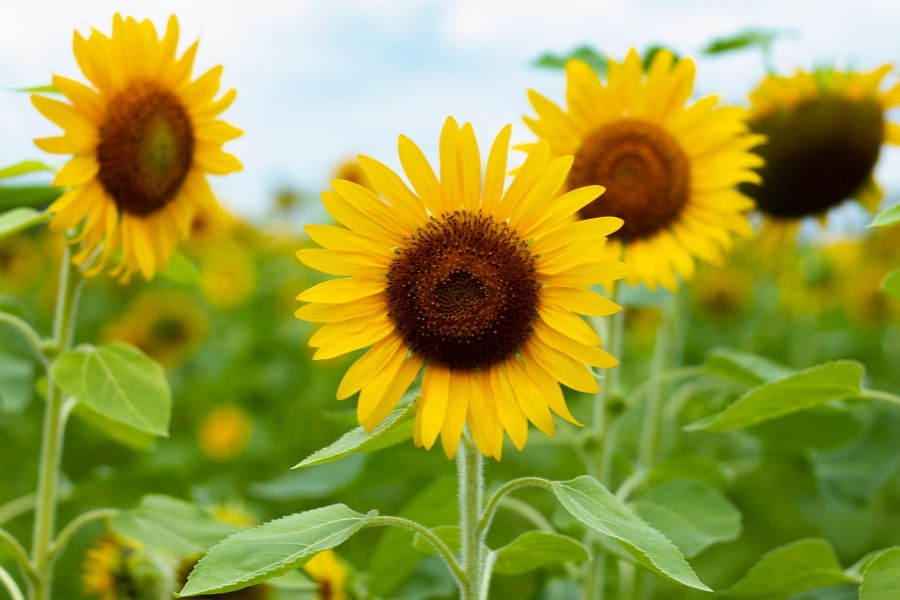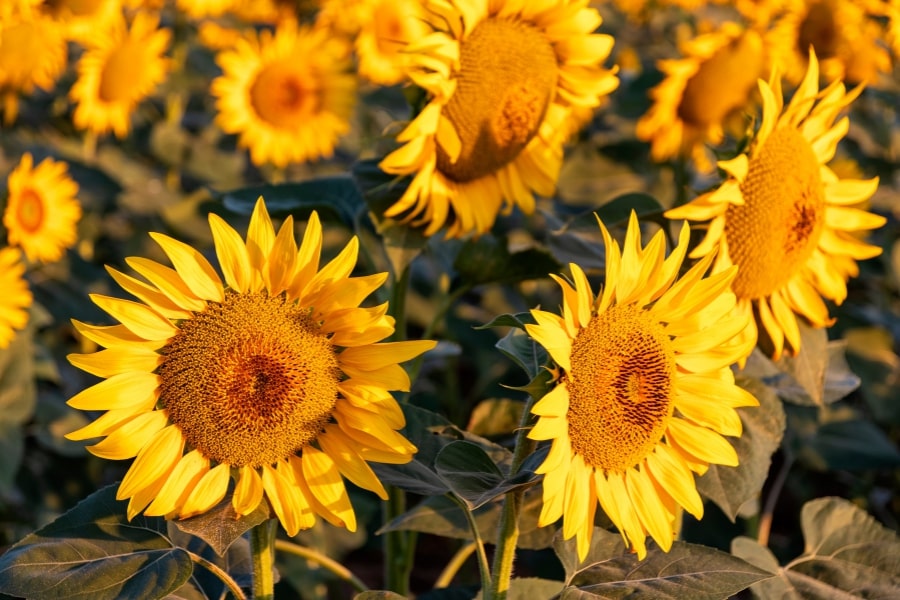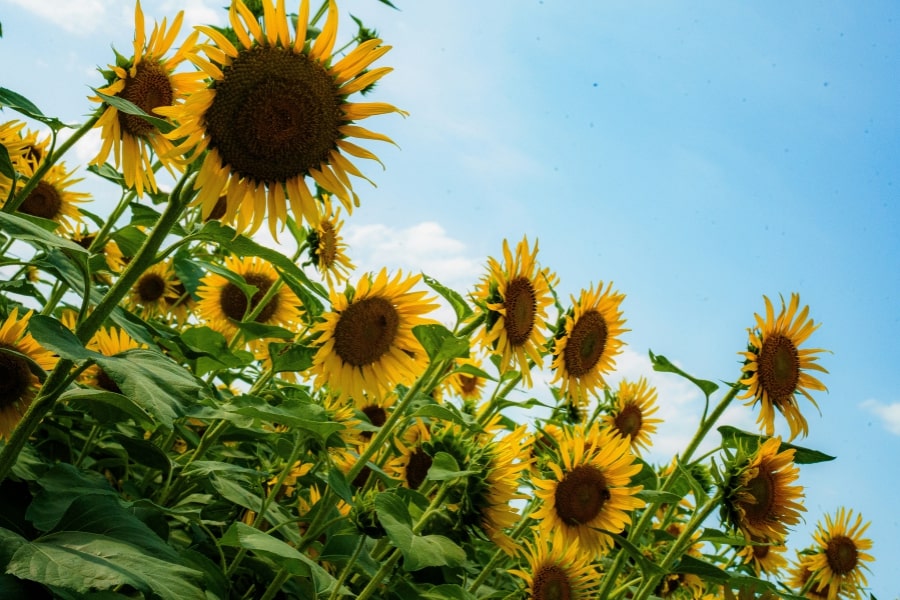Few plants capture the spirit of summer quite like the Sunflower, scientifically known as Helianthus annuus — a symbol of joy, warmth, and resilience. Derived from the Greek words helios (sun) and anthos (flower), Helianthus lives up to its name, turning its golden blooms toward the sun as it moves through the sky. Indigenous to North America, sunflowers have a rich history dating back thousands of years, with evidence of their cultivation by Native American tribes. The common sunflower (Helianthus annuus) is the most widely cultivated species and has become synonymous with the genus.

Our Selection of Helianthus
At Martin Garden Center, we’re thrilled to offer two standout varieties of Helianthus for Spring 2025 — grown right here in 4” containers:
- Sol Seeker™ Yellow – A compact, branching sunflower with vivid golden blooms that keep coming from spring to frost. Excellent for containers or mid-border displays.
- SunBelievable® Brown Eyed Girl – An award-winning Proven Winners® hybrid known for nonstop blooms — producing over 1,000 flowers per season! Features sunny yellow petals with rich brown centers.
Helianthus grows fast! It often jumps from 4” pots to 1-gallon containers in just weeks. Buy early in spring to secure yours before prices and sizes increase. Unfortunately, few vendors in our region grow Helianthus, so our supply is always limited. When it’s gone — it’s gone!
Growing and Caring For Sunflowers
- As their name suggests, Sunflowers thrive in full sunlight. Plant them in a location where they receive at least 6 to 8 hours of direct sunlight daily. Adequate sunlight is crucial for healthy growth and the development of robust flower heads.
- Sunflowers are adaptable to various soil types but prefer well-drained, loamy soil. They are not overly demanding regarding fertility but benefit from soil enriched with organic matter. Good drainage is essential to prevent waterlogged conditions, which can lead to root rot.
- While sunflowers are relatively drought-tolerant once established, consistent watering is crucial during their early growth phase. Water deeply but infrequently, allowing the soil to dry out between waterings. Once mature, sunflowers can withstand periods of dryness.
- Plant sunflower seeds directly in the garden or sow them in containers for later transplanting. The spacing depends on the variety, but generally, larger varieties require more space. Follow the recommended spacing to ensure proper air circulation and prevent overcrowding.
- Taller sunflower varieties may require support to prevent them from bending or toppling under the weight of the flower heads. Stake or provide a support structure as needed, especially in windy conditions.
- Sunflowers are not heavy feeders, but incorporating a balanced fertilizer into the soil before planting can support their initial growth. Avoid excessive nitrogen, as it can promote lush foliage at the expense of flower production.
- Deadheading, or removing spent flowers, encourages continuous blooming and prevents the plant from directing energy into seed production. While some gardeners leave the seed heads for birds and wildlife, deadheading can prolong the flowering season.

Leaves and Flowers
Sunflower leaves are broad, coarse, and typically heart-shaped, with a rough texture. They are arranged alternately along the stem. The leaves play a crucial role in photosynthesis, harnessing sunlight to convert carbon dioxide and water into energy.
The most distinctive feature of sunflowers is, undoubtedly, their flowers. The large, showy flower heads consist of two main parts: the central disk and the ray florets. The disk, often referred to as the “face” of the sunflower, is composed of tiny tubular florets packed tightly together. Surrounding the disk are the ray florets, which resemble petals and radiate outward in a vibrant display of yellow, orange, or even red hues.

Common Uses in Gardening and Landscaping
Sunflowers are popular additions to gardens, contributing a bold and cheerful presence. Taller varieties make excellent focal points, while shorter varieties can be used for borders or mass plantings. Sunflowers are also prized for their long stems and vibrant blooms, making them ideal for cut flower arrangements.
Sunflowers also attract pollinators, including bees and butterflies, with their nectar-rich flowers. Additionally, leaving spent flower heads in the garden provides a food source for birds. Some sunflower varieties produce edible seeds that can be harvested for snacking, cooking, or even pressing into sunflower oil. Varieties bred specifically for seed production may have smaller, more tightly packed flower heads.

Frequently Asked Questions
When Is The Best Time To Plant Sunflowers?
Sunflowers are typically planted in late spring or early summer when the soil has warmed up. They require warm temperatures to germinate and thrive. Sow the seeds directly in the garden or start them indoors and transplant them after the last frost.
How Long Do Sunflowers Take to Bloom?
The time it takes for sunflowers to bloom depends on the variety and growing conditions. In general, common sunflowers (Helianthus annuus) can start blooming 70 to 100 days after germination. Dwarf varieties may have a shorter time to bloom.
Are Helianthus Annuals or Perennials?
The genus Helianthus, which includes the common sunflower (Helianthus annuus) and other species, contains both annual and perennial varieties. In the SC Upstate (Zone 8A), we treat Helianthus as an annual.
